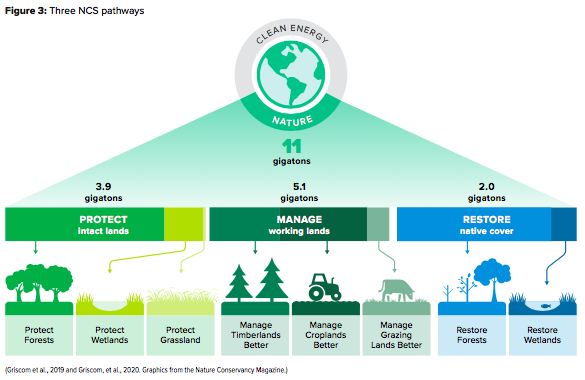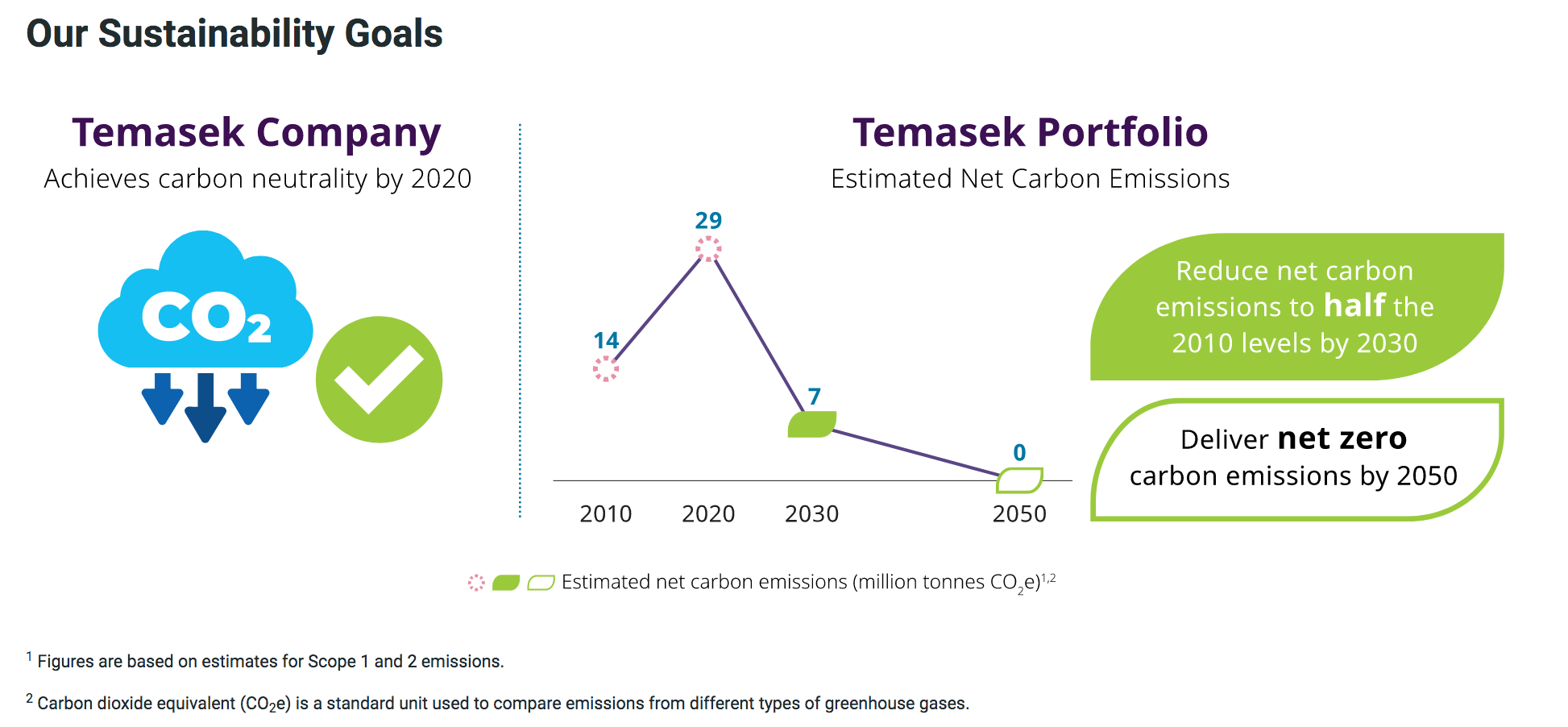Climate change is a force to be reckoned with, not only impacting societies, but businesses too.
Just like the Covid-19 pandemic, which has revealed vulnerabilities in global supply chains, climate change and the loss of biodiversity will threaten the survival and viability of businesses in a similar or even more detrimental manner.
Increasingly, companies are recognising their climate-related risks and considering cost-effective investment options to future-proof themselves.
Instead of high-tech solutions, investing in better management and protection of natural resources can be an equally worthwhile investment, said a recent report released by Temasek.
Temasek launches report on business case for nature climate solutions in Southeast Asia
On Tuesday (Dec. 8), Temasek released a joint report with Conservation International, NUS Centre for Nature-based Climate Solutions and DBS to make the business case for natural climate solutions (NCS).
What are natural climate solutions?
Natural climate solutions (NCS) involve the use of climate mitigation technologies that harness natural processes to reduce or remove greenhouse gases.
Broadly speaking, there are three types of NCS - protecting, managing, and restoring various types of natural vegetation.
Forests and wetlands, for example, are carbon sinks that help to absorb carbon dioxide which warms the Earth when left to accumulate in the atmosphere.
Studies have shown how NCS can provide over a third of cost-effective climate mitigation needed worldwide to achieve net-zero emissions by 2050, and keep global warming below 2°C.
 Graphic by Nature Conservancy Magazine
Graphic by Nature Conservancy Magazine
First-of-its-kind study on why businesses should invest in NCS in Southeast Asia
The release highlights that the benefits of NCS in Southeast Asia are "striking", as the region is endowed with rainforests, peatlands, mangroves, and seagrass.
Titled "The Business Case for Natural Climate Solutions", this is the first-of-its-kind study done in Southeast Asia.
The report highlighted some options that businesses could adopt to transition towards a low-carbon economy, including internal carbon taxes.
This adopts internal carbon pricing to help companies to assess the financial implications of their own carbon emissions, and work towards increased energy efficiency.
Businesses are also uniquely positioned to catalyse investment in NCS and to set up and stimulate a thriving carbon market, while committing to high-quality credits and fair prices, supporting design and development costs, and policy development and advocacy.
Senior Vice-President of Conservation International Asia-Pacific Field Division, Richard Jeo commented:
“Many of the world’s most carbon-rich ecosystems – tropical forests, peatlands and mangroves – are found right here in Asia. Nature provides the best and most cost-effective technology for removing carbon from the atmosphere but is vastly underfunded despite new corporate climate commitments that are being made every day. This report provides a clear roadmap for direct investment in natural climate solutions.”
Moving away from viewing sustainability as CSR
Currently, businesses might view NCS through the lens of corporate social responsibility (CSR).
However, NCS are viable investments like engineered mitigation solutions, and can be even more favourable if one takes into consideration the positive spillovers.
A 2020 study by the NUS Centre for Nature-based Climate Solutions shows that protection of tropical forests in Southeast Asia could potentially generate a return-on-investment of up to US$27.5 billion (S$36.7 billion) annually.
The carbon sequestration is equivalent to around 0.56 giga tonnes of carbon dioxide emissions. That’s roughly around 10 times of Singapore’s emissions using the figures reported in 2017.
Elaborating on this point, the director of the NUS Centre for Nature-based Climate Solutions, Koh Lian Pin said:
“The potential climate mitigation and financial payoffs of NCS are comparable with engineered mitigation solutions. If other co-benefits that NCS provide are considered, such as clean air and water, coastal resilience, biodiversity conservation, food security safeguard, and flood prevention, they present even greater benefits."
What makes NCS a good investment?
Frederick Teo, who is director of the Sustainability and Stewardship Group at Temasek, highlighted the importance of viewing conservation projects as business opportunities, rather than just a CSR approach.
"...One of the objectives of launching this particular report and getting all the folks together to look at it really is to see this as also an important business opportunity and actual substantive business project that can allow for corporates, the industry, to consider nature-based solutions as a very legitimate and important dimension of abating their carbon footprint."
One notable insight from the report is that voluntary carbon offset issuances nearly doubled between 2018 and 2019 and the demand for carbon offsets is set to grow in the next decade.
The demand could be driven by the implementation of policies such as carbon tax.
With greater demand, the prices of carbon offsets or credits will increase which makes it wiser to start investing in NCS projects early.
Case study in Colombia
One example raised in the report is a blue carbon* project implemented by Conservation International and partners (Apple Inc., Invemar Research Institute, local and national authorities, Omacha Foundation, and local communities) in the Morrosquillo Gulf on Colombia's Caribbean coast.
Colombia is home to many threatened mangrove species. This project serves to protect 9,600 hectares of mangroves from degradation and deforestation, and that's about one-tenth of the size of Singapore.
In 2016, Colombia implemented a carbon tax and that creates a national scale of demand for carbon credits to offset emissions. Alternatively, companies will have to pay for the carbon emitted.
The said project then became the first eligible blue carbon project that can issue verified carbon credits which are generated by the plant biomass and extensive soil components in these protected mangroves.
*Blue carbon is the carbon stored in coastal and marine ecosystems, such as mangroves and seagrass.
S'pore's role in establishing a marketplace to trade carbon credits
Positioned next to some of the world's most diverse and precious natural systems in the world, Singapore, despite being resource-scarce, has the potential to become a regional and global hub for the carbon trading system.
Speaking to the media, Mikkel Larsen, Chief Sustainability Officer, DBS Bank, highlighted that Singapore is in a strong position to create a marketplace for carbon credits to be traded in this region.
However, creating a marketplace is a "very complicated process".
For example, how does one monitor, verify, and validate an NCS project and issue the rightful credits? How does one differentiate a good quality NCS project from a bad one?
These are tough questions to answer for companies that are located far away and are unable to keep a close watch on their NCS projects in Southeast Asia.
Larsen said:
"Imagine you sit thousands of kilometres away, and you're looking to invest in a project, somewhere in a country in Southeast Asia. You might have reservations about that and you won't have the commitments to go and put people on the ground yourself. You need to have a trusted source that you can actually rely on what they say is good quality, it is good quality."
And that "trusted source" can come from Singapore where its rule of law has been valued by businesses.
Singapore can also do more with its research and technological capabilities to help with the long-term monitoring and verification and validation of NCS projects, Koh said:
"For example, using satellite-based remote sensing technologies that could provide near real-time assessment and evaluation of what's happening on the ground. So all of those things are currently being explored and discussed in various different threads or discussions around this creation of a carbon ecosystem in Singapore."
Temasek has also funded a study to understand how blue carbon can mitigate climate change in Southeast Asia.
While the holistic approach to safeguarding the environment, human health, and economic growth sounds promising, Larsen added that biodiversity loss is another problem that needs to be solved.
He also said that the ability to put a price on biodiversity loss is a challenge that needs to be tackled at some point in time, as nature has value above and beyond just the ability to sequester carbon.
Temasek to help portfolio companies to reduce carbon emissions
Leading by example, Temasek has achieved carbon neutrality in its last financial year through its the purchase of carbon credits (or carbon offsets) through their investments in two forest restoration and conservation projects, one of which was in Indonesia, and the other was in Kenya.
The project in Indonesia aims to prevent deforestation, peatland drainage and fires, and has been verified by an independent third party, under the Verified Carbon Standard (VCS), which is a leading international standard that ensures that the projects achieve an actual reduction in carbon emissions.
 via Temasek website.
via Temasek website.
The investment company has also pledged to help their portfolio companies to halve their net carbon emissions by 2030, and will work towards net zero emission by 2050.
When evaluating their investments, Temasek also looks out for companies with business models that can contribute to mitigating carbon emissions such as plant-based protein and renewable energy businesses.
Related story:
Totally unrelated but follow and listen to our podcast here
Top photo via Ng Yiling's NTU Blog.
If you like what you read, follow us on Facebook, Instagram, Twitter and Telegram to get the latest updates.
